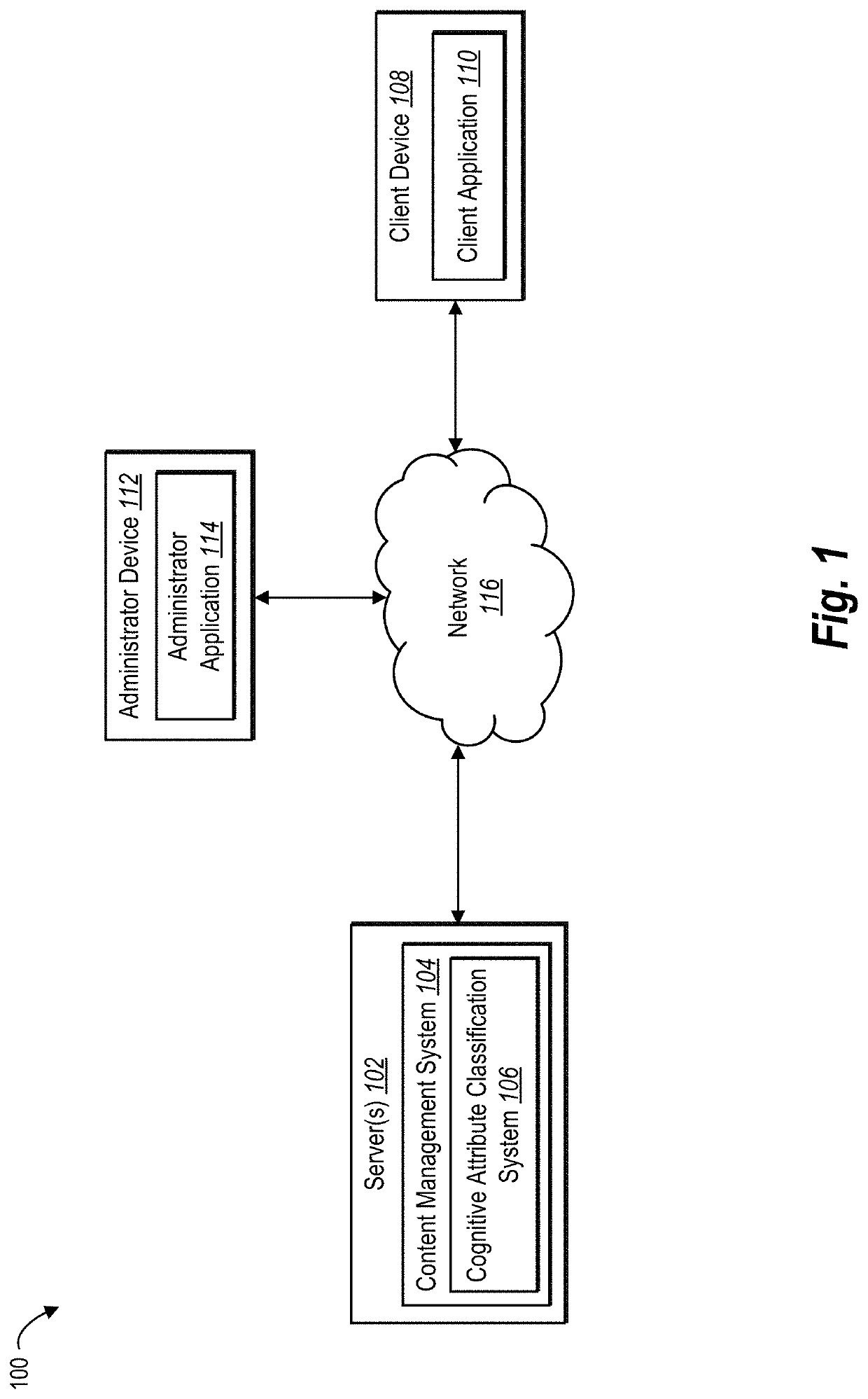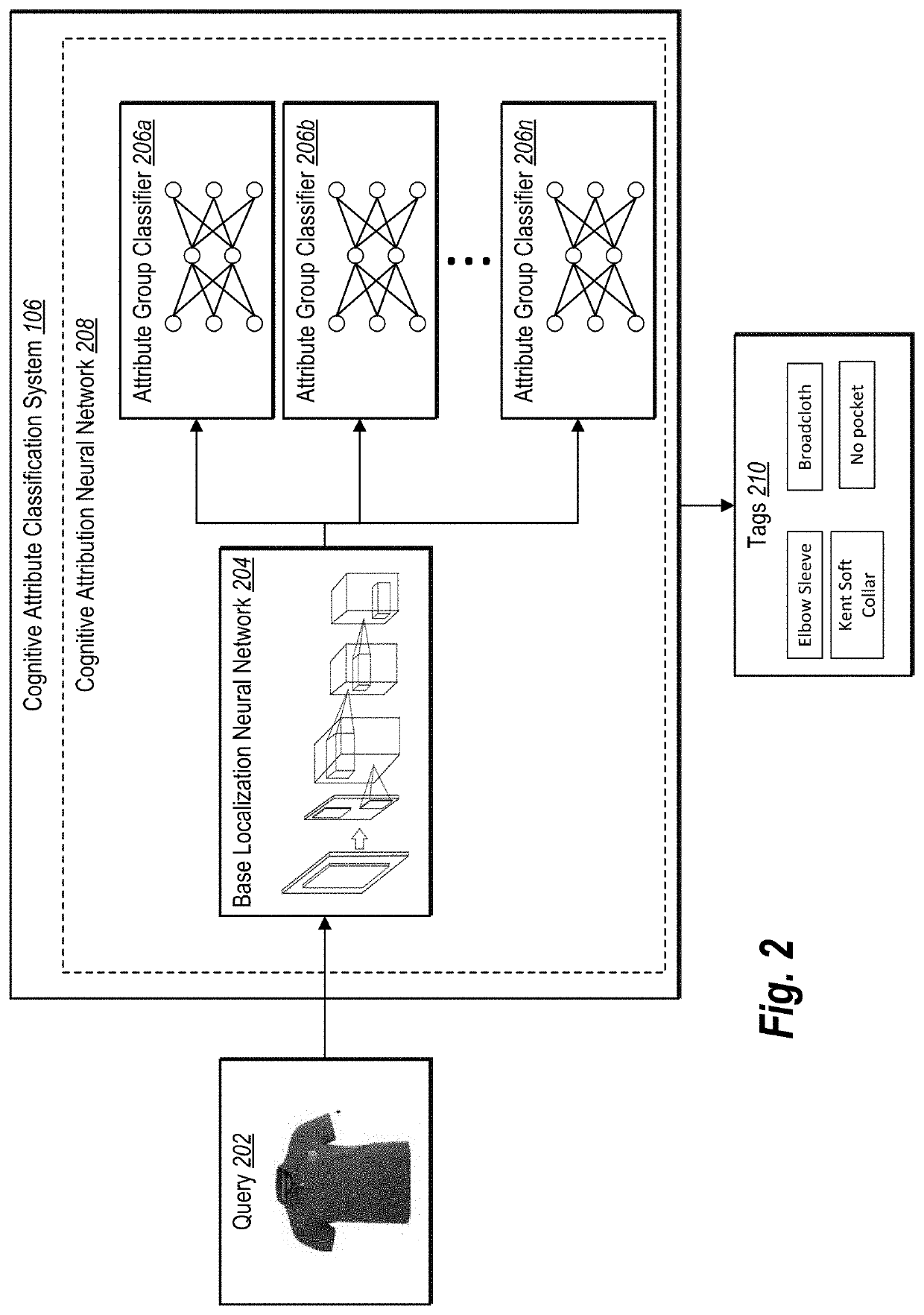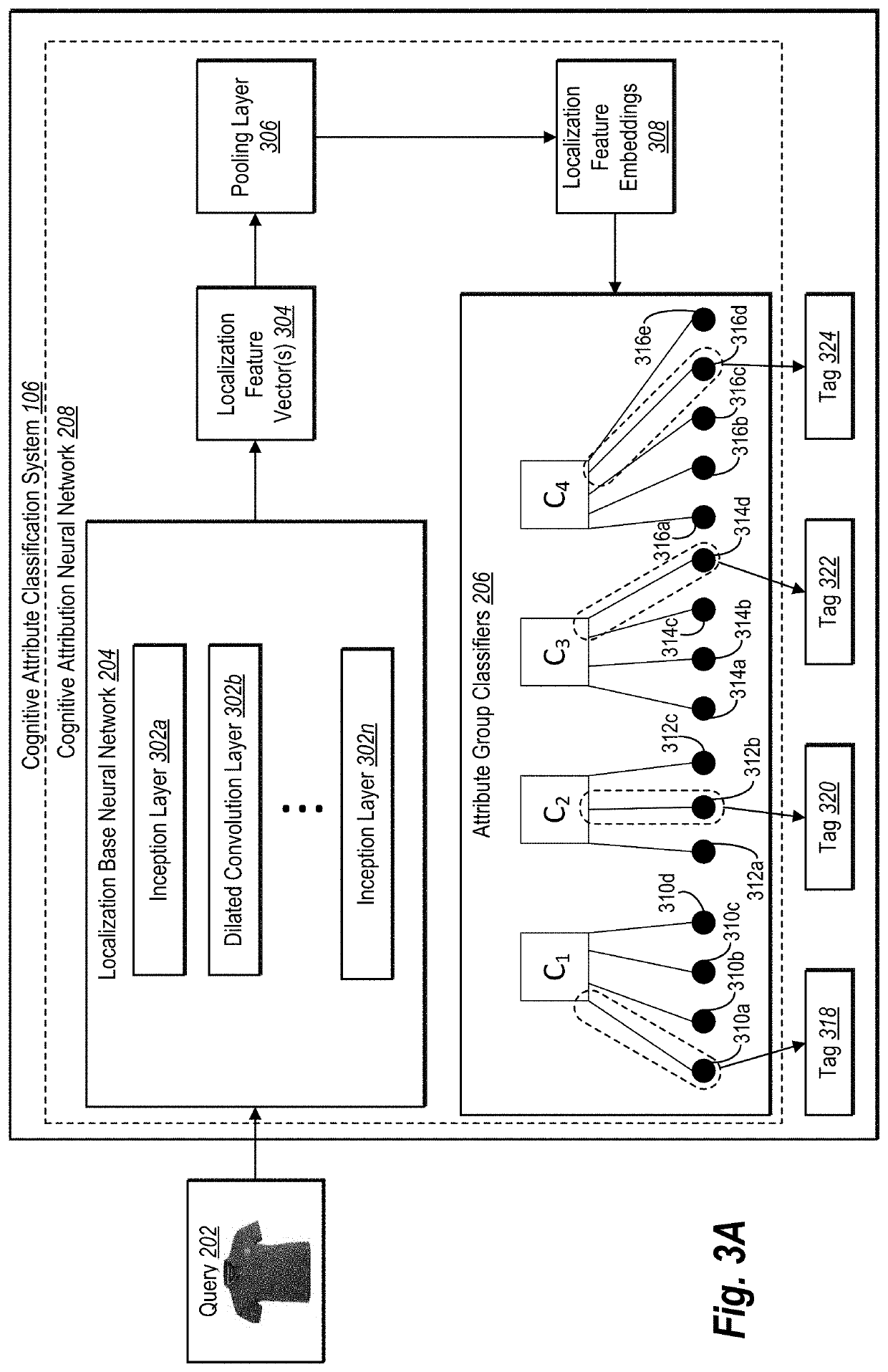Identifying digital attributes from multiple attribute groups within target digital images utilizing a deep cognitive attribution neural network
a neural network and attribute technology, applied in still image data clustering/classification, biological models, instruments, etc., can solve the problems of inability to target or compare particular identified attributes within digital images, inability to target or compare particular identified attributes, and inability to operate flexible and efficient, so as to achieve efficient localization and prediction of higher-order attributes, efficient and flexible operation, and powerful
- Summary
- Abstract
- Description
- Claims
- Application Information
AI Technical Summary
Benefits of technology
Problems solved by technology
Method used
Image
Examples
Embodiment Construction
[0023]This disclosure describes one or more embodiments of a cognitive attribute classification system that intelligently trains and applies a cognitive attribution neural network to identify digital attributes from multiple attribute groups within target digital images. In particular, the cognitive attribute classification system can utilize a cognitive attribution neural network that includes a base neural network and one or more attribute group classifiers to determine tags for objects portrayed in query images. For instance, the cognitive attribute classification system can use a base neural network that includes an architecture of interleaved layers to efficiently localize attributes of a query image. The cognitive attribute classification system can also utilize attribute group classifiers to identify multiple attributes of the query image within a single network. The cognitive attribute classification system can then utilize these attributes to generate tags and / or generate d...
PUM
 Login to View More
Login to View More Abstract
Description
Claims
Application Information
 Login to View More
Login to View More - R&D
- Intellectual Property
- Life Sciences
- Materials
- Tech Scout
- Unparalleled Data Quality
- Higher Quality Content
- 60% Fewer Hallucinations
Browse by: Latest US Patents, China's latest patents, Technical Efficacy Thesaurus, Application Domain, Technology Topic, Popular Technical Reports.
© 2025 PatSnap. All rights reserved.Legal|Privacy policy|Modern Slavery Act Transparency Statement|Sitemap|About US| Contact US: help@patsnap.com



